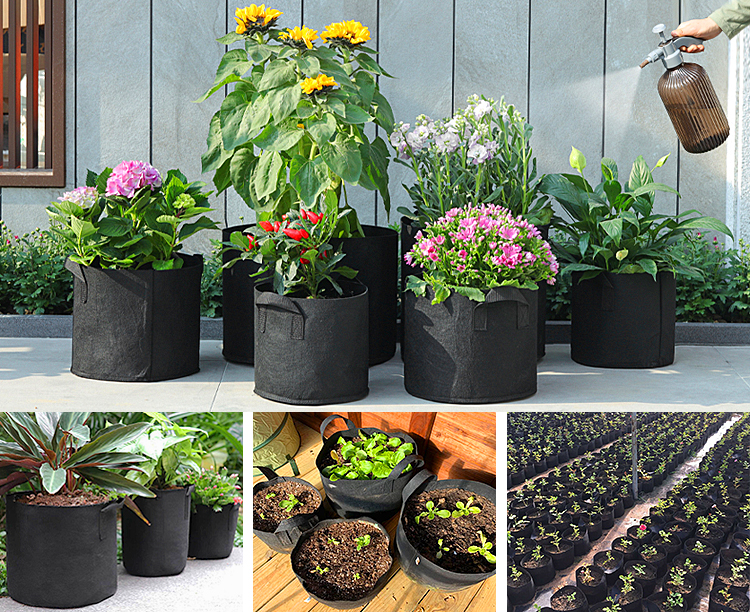When it comes to gardening and growing plants, using the right equipment is crucial to successful growth. One product that has become popular in recent years is grow bags, also known as plant grow bags. These bags provide a convenient and efficient way to grow a variety of plants and are suitable for both indoor and outdoor gardening.
Grow bags are made from a variety of materials, including fabric, plastic, and even biodegradable materials. Each type of grow bag has its own advantages and is suitable for different plant species. In this article, we will discuss the different types of grow bags on the market and how to choose the best one for your gardening needs.
Material selection:
*Fabric grow bags
Fabric grow bags are a popular choice among gardeners because of their good drainage properties. The porous fabric allows excess water to seep out, preventing stagnant water and root rot. Additionally, this type of grow bag encourages air pruning, which stimulates the growth of new feeder roots, resulting in healthier plants. Additionally, fabric grow bags are durable, reusable, and lightweight, making them easy to move around the garden.
*Plastic grow bags
The price of plastic planting bags will have certain advantages. They come in a variety of sizes and shapes to accommodate different plant sizes and types. However, plastic grow bags may retain moisture for longer periods of time, so there should be adequate drainage holes in the bottom to avoid water accumulation. It is also important to note that plastic grow bags are not as breathable as fabric bags, which can affect aeration of the root system.
*Biodegradable grow bags
Biodegradable grow bags are an excellent choice for those who prioritize eco-friendly options. These bags are made from biodegradable materials such as coconut fiber and natural fibers that will eventually break down over time. They have good drainage and good aeration, making them suitable for a variety of plants.
Dimensions depth:
*When choosing a grow bag, it’s crucial to consider size and depth based on your plant’s root system. The bag should be large enough to accommodate the growth of the plant, providing ample room for the roots to spread and develop. Insufficient space can cause stunted growth and limit the plant’s access to nutrients and water.
Planting needs:
*In addition to size and materials, consider the specific requirements of the plants you plan to grow. Some plants require more aeration, while others may benefit from better water retention. Research the specific needs of your plants and choose a grow bag that meets those requirements. Also, pay attention to the durability and longevity of the grow bag. You want a bag that can withstand multiple growing seasons without tearing or deteriorating. If you plan on moving your grow bag frequently, check for reinforced seams and sturdy handles.
All in all, grow bags provide a practical and efficient solution for plant cultivation. By choosing the right type of grow bag and considering the specific needs of your plants, you can ensure optimal growth and harvest. Remember to choose a grow bag with proper drainage, adequate size, suitable material, and long-lasting durability. By choosing the right grow bag, you can transform your gardening experience and reap the rewards of lush plants.
Post time: Dec-01-2023






